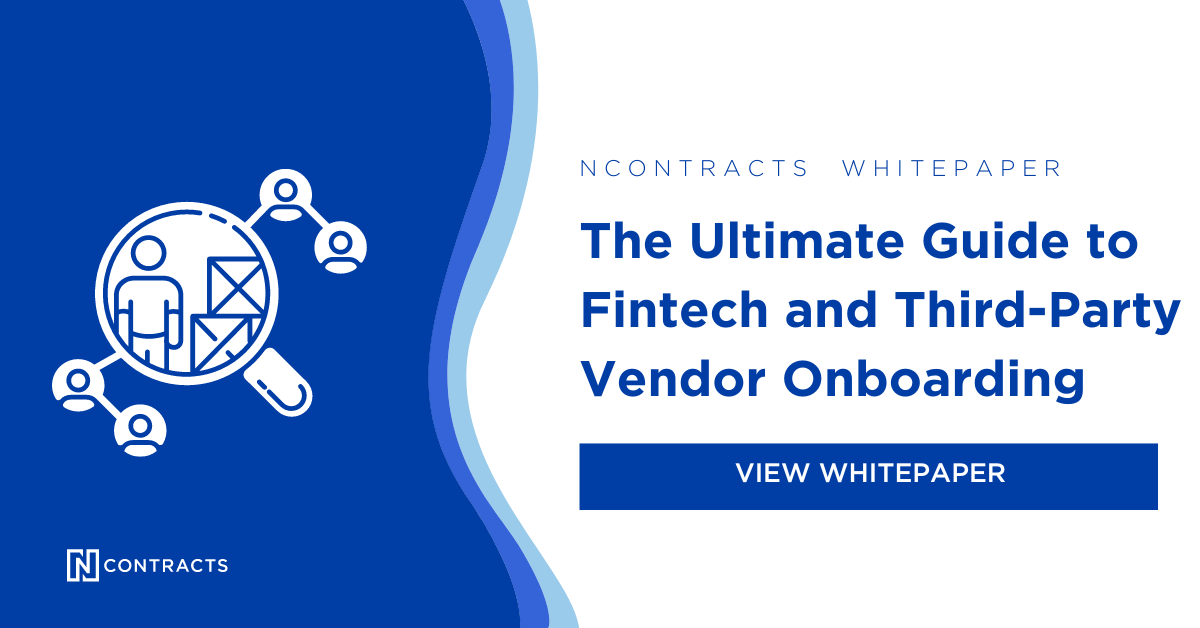No one knows when the next downturn is coming. The only thing we can do is to assume one will come sooner or later and put plans in place to mitigate the risk.
Chances are your institution’s balance sheet is as prepared as it can be for economic disruptions. That’s the very nature of banking.
But what about vendors?
The vast majority of banks and credit unions rely on a variety of third-party vendors to deliver critical products and services. From cybersecurity to mobile banking to consulting services, many financial institutions (FIs) would be unable to conduct the basic business of banking if a vendor was unable to perform as contracted. Now is the time to make sure you have policies and procedures in place to ensure the ongoing financial soundness of your third-party vendors.
How do you know your vendor is in trouble and what can you do if it is? Read on to find out.
Identifying financially troubled vendors
Information about a critical vendor’s financials should be guaranteed in your vendor contract. Documents like SSAE 18s, SOC-1s, insurance certificates and publicly available data should be easily accessible and monitored regularly.
A major change in any of these documents is cause for investigation. The earlier you suspect a vendor is having financial difficulties and may stop providing services, the more time you’ll have to find an appropriate replacement.
Avoid these mistakes
1. Viewing the vendor like a loan applicant. The biggest mistake banks and credit unions make when analyzing the financial strength of a vendor is treating a vendor like a loan applicant. Just because your institution wouldn’t lend to a vendor doesn’t mean it’s not financially sound. Sterling A credit is not a necessary.
Consider some of the largest core vendors. These companies often leverage up to buy other companies. On paper it might look like they are unhealthy, but these service providers are actually betting on the future. They are investing in companies that will help them keep pace with evolving technologies and maintain their competitive position.
2. Giving all vendors the same scrutiny. When it comes to financial due diligence, critical vendors are the top priority. Yes, it’s a hassle if your go-to florist goes under. But it pales in comparison to the epic mess if a core processor folds.
What to do if a critical vendor is in trouble
They key to navigating a vendor failure with minimal disruption is preparation. You can’t control your vendor’s finances, but you can have a plan in place.
Begin with the contract to understand the implications. How difficult or expensive will it be to untangle yourself from this relationship? What are the fees to terminate? What would a transition plan look like?
Then, get shopping. Reach out to other potential vendors to find a potential replacement.
If a critical vendor suddenly folds, don’t panic. The good news is that your FI’s business continuity plan (BCP) should have plans for responding to a vendor outage, regardless of the reason it’s caused.
It goes back to resiliency. The ability to recover quickly from any interruption is more than a best practice. It’s a regulatory requirement. A good BCP plan is function-based and should work whether a vendor disruption is caused by tornado damage to its data center or a pandemic that keeps all its employees home.
Don’t get caught off guard by a financially troubled vendor. Make sure you’re conducting ongoing financial due diligence and addressing the role of critical vendors in your BCP.
